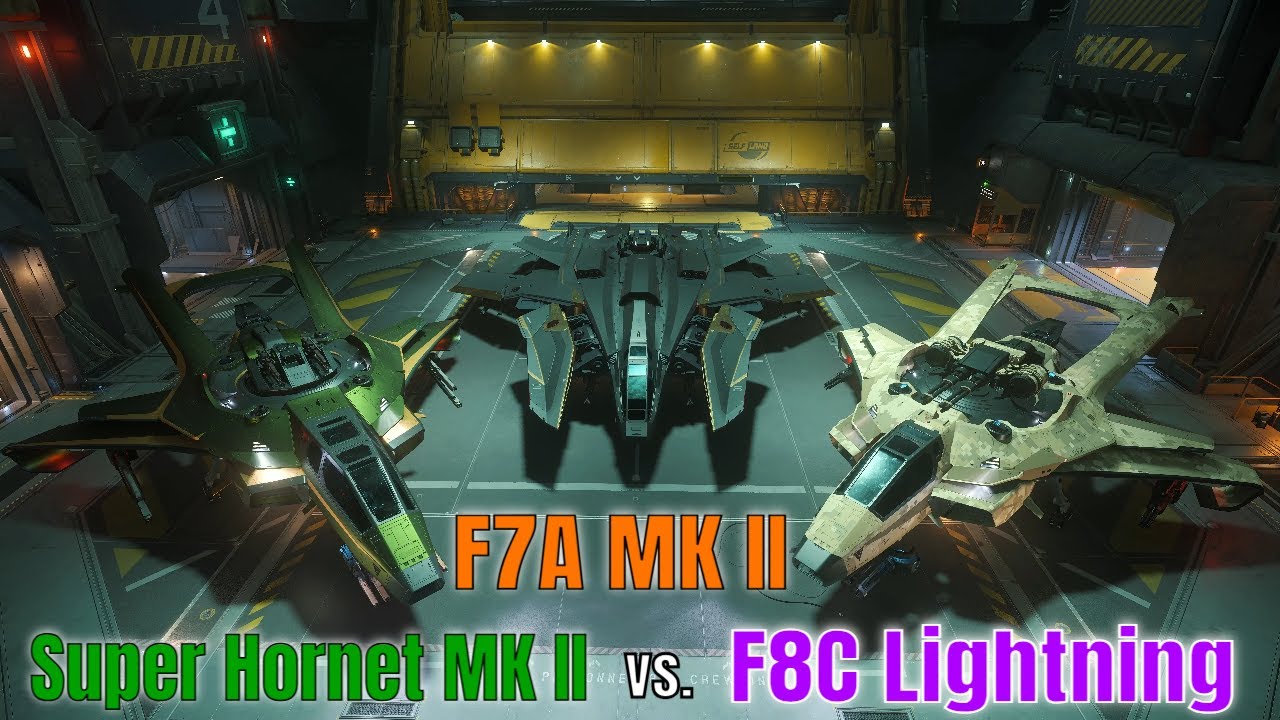The video compares the F7A Hornet MK II, Super Hornet MK II, and F8C Lightning, highlighting their specifications, strengths, and weaknesses in speed, maneuverability, stealth, and combat capabilities. While the F7A excels in agility and speed, the Lightning offers superior shield strength and hull points, and the Super Hornet provides a balance of durability and missile capacity.
In the video, a detailed comparison is made between three ships: the F7A Hornet MK II, the Super Hornet MK II, and the F8C Lightning. The discussion begins with basic specifications, highlighting that both the F7A and F8C are single-seater ships, while the Super Hornet accommodates two crew members. In terms of speed, the F7A leads with a maximum SCM speed of 220 m/s, followed closely by the Super Hornet at 215 m/s and the Lightning at 210 m/s. The F7A also excels in maneuverability, making it the most agile among the three, while the Lightning has the highest hull points but lower maneuverability.
The video delves into the ships’ navigation and stealth capabilities, noting that the F7A and Super Hornet have similar stealth signatures, while the Lightning performs slightly better in this regard. The F7A has a navigation max speed of 1,146 m/s, with the Super Hornet and Lightning trailing at 1,125 m/s and 1,120 m/s, respectively. The F8C Lightning boasts a larger hydrogen capacity, which is beneficial for extended missions, while the F7A and Super Hornet share identical capacities.
An important aspect of the comparison is the ships’ components, particularly their shields. The F7A has the lowest shield strength with two size one shields, while the Super Hornet has three size one shields, and the Lightning benefits from two size two shields, giving it a significant advantage in combat situations. The video emphasizes that while the F7A excels in speed and maneuverability, the Lightning’s superior shield strength and hull HP make it a formidable opponent.
Weaponry and missile capacity are also analyzed, revealing that both the F7A and Super Hornet can carry the same hardpoint loadout, while the Lightning has a different configuration. The video discusses the DPS (damage per second) for various weapon setups, indicating that the Lightning has a slightly higher sustained DPS compared to the other two ships. The presenter highlights the fun and versatility of customizing loadouts, particularly with the F7A, which allows for various configurations to suit different combat scenarios.
In conclusion, the video summarizes the strengths and weaknesses of each ship. The F7A Hornet MK II is preferred for its speed and maneuverability, making it ideal for agile combat. The Super Hornet MK II is noted for its additional missile capacity and slightly better durability, while the F8C Lightning stands out for its superior shield strength and hull HP, albeit at the cost of speed and maneuverability. The discussion wraps up with a recommendation for the best loadout configurations for each ship, emphasizing the balance between firepower and agility in tactical engagements.
